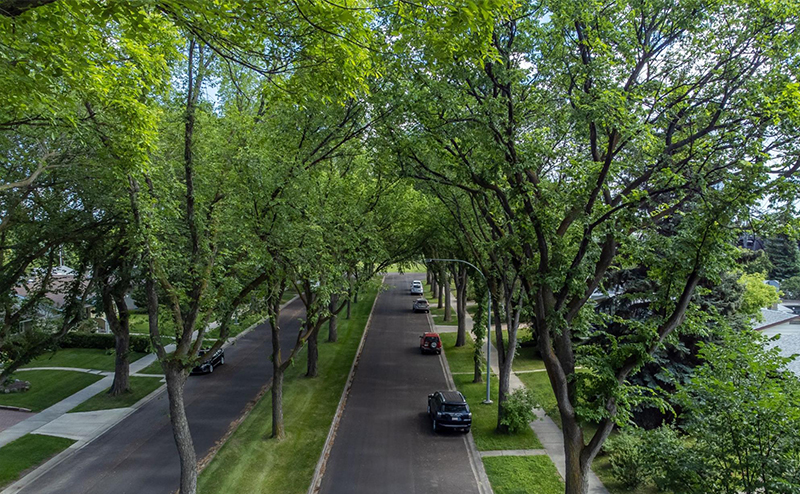Tree Replacement Process
Dead and nearly dead trees are identified for removal.
One-half of the City’s boulevard and open space trees are assessed every year by the Inventory and Assessment team. The east side of the city is the primary focus of assessment in even years, for example, 2024, alternating with the west side in odd-numbered years. If a tree has been marked for removal, it will be a candidate for the Tree Replacement program.
For the next several years, approximately 6,000 trees will be planted yearly through the Tree Replacement program. This is an annual increase of 3,000 trees to help reduce the backlog of trees requiring replacement.
The sites for the following year’s replacement plantings are determined each fall. Priority is given to neighbourhoods with the highest proportion of trees requiring replacement within the quadrants of focus. Hardscape sites within Business Improvement Areas are replaced annually.
Explore the Tree Replacement Map below to view the neighbourhoods currently selected for replacement planting.
Each site is evaluated for above and below ground conflicts and to determine which tree species is best suited to the site conditions. In some situations replacement planting might not be feasible, such as when underground utilities are too close to the planting area.
Tree species are selected for a variety of reasons, such as site conditions and proximity to surrounding infrastructure. A tree species may also be selected to help increase the tree species diversity within Edmonton’s urban forest. Tree species diversity is especially important in our changing climate and to reduce the impact of disease and pests.
Trees are typically installed between mid-May and mid-October.
Stakes and mulch will be installed at the time of planting to help support tree establishment.
Depending on the species of tree planted, the tree will be watered periodically throughout the growing season for the next 3 to 5 years.


